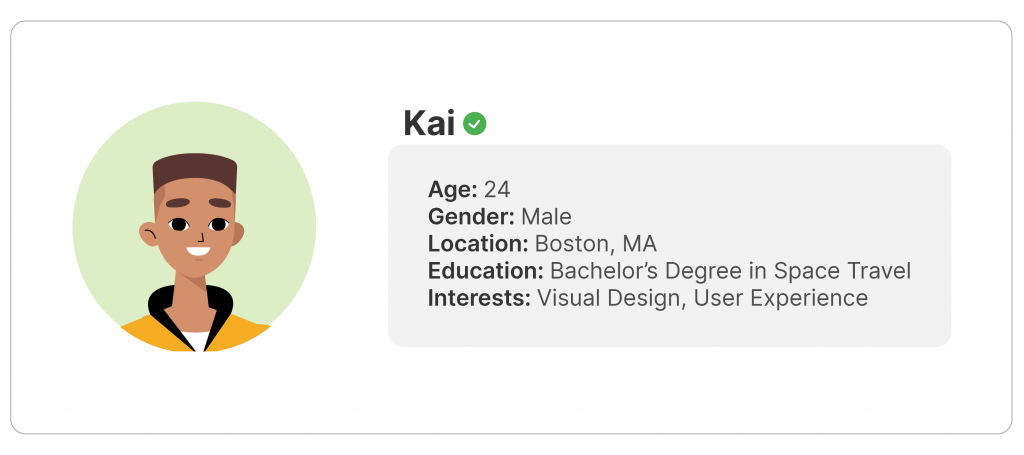How To Design Brand Experiences
Good branding provides authentic digital experiences.
It starts when someone discovers your brand for the first time, and continues onto other stages such as conversion, purchases, and loyalty.
In a recent Walker study on consumer insights, they found that customer experience will overtake price and product as the key brand differentiator by the end of 2020.
More specifically, it states that 86% of buyers will pay more for a better consumer experience.

Defining brand experience
In the digital world, user experience is a strong drive behind the consumer’s choice for the brands they find trustworthy, valuable, and comfortable to use.
Whether it’s that productivity app, the mailing service, or the movie streaming platform, what consumers experience along the way can make or break the decision about the brand they choose.
What is brand experience?
Brand experience is the way that consumers interact with and perceive your brand. It starts when someone discovers your brand for the first time, and continues onto other stages such as conversion, purchases, and loyalty.
Digital interactions that contribute to brand experiences can be scattered across many touchpoints on the web. Such are brand websites, social profiles, communication channels, and more.
Modern consumers are skillful digital users that consider brand practices as an influential factor in decision making. That makes brand experience an important part of the overall consumer journey.
Why is brand experience important?
It is important that the experiences that consumers share with your brand feel consistent and connected. A well-designed experience invites more consumer engagement and offers an exchange of value at all relevant touchpoints.
Even though each experience is personal and can be affected by many different things, recognizing and planning for practical interaction with consumers can go a long way when it comes to your content strategy.
The elements of brand experience

Ask around, and you will get different answers from each brand authority about the way they interpret their consumer and brand experience. Each answer will probably be distinct enough to add a unique perspective.
Although it might seem like a problem at first that we cannot precisely define the consumer experience, it shouldn’t stop us from trying to define it as best as we can.
In his book titled “Mapping Experiences,” author James Kalbach states that we can point to three common aspects of experience to help us understand it: experiences are personal, they are situational, and they are holistic.
Let’s take a look at each of those points and see how they relate to the subject of brand experiences.
Experiences are personal.

Meaning the perception of an individual and how they view the world.
There is a set of views and opinions that consumers carry with them when evaluating your brand. That includes prior knowledge about the topics in question, personal beliefs, desires, and so on.
To be successful at understanding the needs of your consumers, you need to go beyond simple demographics and look into the mindset of the people that you’re trying to reach.
Experiences are holistic.
Meaning all-encompassing, including actions, thoughts, and feelings over time.
It has become very rare that a consumer goes directly through a funnel, moving linearly from brand discovery to purchasing.
Instead, they interact with brands on multiple occasions into multiple stages, such as exploring, comparing, engaging, evaluating, and more.
Experiences are situational.
Meaning specific circumstances drive experience more than disposition.
There are many reasons why one can be visiting your website. The intent behind the visit can reveal what type of content you need to make available for consumers.

7 Tips for creating engaging brand experiences
The design of your website, the features of your product or service, even the content you produce, all have an impact on the consumer experience. Consequently, that can have a meaningful impact on the overall status of your business.

1. Go beyond simple demographics
Most brands already have a good understanding of their target audience by employing things like customer personas and journey mapping. Building mental models of the customer experience can take that understanding to an even deeper level.

To be successful at understanding the needs of your consumers, you need to go beyond simple demographics and look into the mindset of the people that you’re trying to reach.
Here are some things to look for:
- Activities they partake in, either by themselves, with friends and family, or other community members.
- Their current environment of everyday life, including social circles and place of living, how they move from one place to another, and the tasks that they perform.
- The tools, gadgets, and devices that they use to perform actions and jobs related to the target area.
- The products, places, and people that they already have as part of their daily lives, influencing their way of operating.
- The beliefs, values, and mindset they hold true about the world and topics related to your brand.
- The goals and intentions that they have set, followed by the results they anticipate, and the outcomes they need to avoid.
- The tasks, habits, and routines that they do in order to progress towards their goals in the area in question.
- The milestones that they have faced on their journey so far and now impact their behavior. That includes inspirations and achievements, but also mistakes and setbacks.
Understanding the mindset of the people that you’re trying to reach makes it easier to serve them the content that supports their point of view and connects with them.
2. Find ways you can connect with consumers
Creating a meaningful connection is the first step toward building a relationship with your people. The goal is to present your brand as an opportunity for them to recognize as a solution.
The first thought that your website visitors have goes along the lines of “Is this for me?”. That is why the most efficient way to connect with them and let them know that you understand them.
A powerful tool to help you do that is by framing their needs and problems the right way. As soon as they see that your band understands what’s the goals, and it’s speaking their language, you will establish a connection.
It is a pre-frame for the way that you will design everything on your website. It’s the strategy that you will use, and later fill out with visuals, words, and other elements.
3. Organize your digital spaces

Your website at the core of brand experiences
No matter how they get introduced to your brand, consumers are likely to end up at the brand website for a final valuation.
It’s the only place where they can get a better feel of the entirety of what your brand has to offer. It is the place that will ultimately make them sway one way or another.
That makes your site an essential digital space for both your and the consumer side of things.
The ideal website helps you as a brand to leverage the power of design, psychology, and technology. At the same time, it provides an amazing experience to the consumer.
It really isn’t just about you stating your side of things and waiting for people to resonate with your message. It’s about practicing empathy and design thinking to create a system that serves both you and the consumer.
Platforms and channels
To utilize your digital network efficiently, it’s important to understand the difference between all of your mediums, or in other words, the difference between platforms and channels.
Platforms are the foundation on which you can build your brand presence, such as the web, phone apps, social media, and gadgets.
Channels serve as a more direct means of communication and include email, advertising, search engines, chatbots, phone, and more.
A big part of organizing your network is to find a good balance between all these areas. Questions to consider when you’re building a multi-channel brand network:
- How are your brands’ platforms and channels connected?
- What platforms and channels are used to distribute content at each stage?
- How do you repurpose content across different platforms?
4. Use visual design principles when creating content

The web is full of information, so people are always looking for visual cues to help them navigate.
Visuals make the instructions on a box easy to follow, they make the books we read more than just big blocks of text, and they make the world easier to understand when there are no words around.
Visual language also plays a big role in the world of marketing. It’s largely responsible for grabbing and retaining the attention of an audience.
You can have a great story to tell, but if you present it as one large block of text, people will have a hard time reading it.
That is why visuals can considerably help your narrative. When used smartly, they can create a feeling of what is your brand identity.
Brand visual elements can include colors, logos, fonts, videos, imagery, and any other visuals that you use. Harmony and consistency in your visual elements tell a story for itself.
5. Map the consumer journey stages

Your strategy can have very specific stages where you want to serve content to your audience depending on your goals, but just as a guide, here are a few common ones:
- Exploring — A person that has not identified the need or problem or they are not aware of an opportunity yet.
- Understanding — A person aware of the need or problem, they understand it, but they don’t have a solution to it yet.
- Comparing — A person that discovered our solution, and they are currently in the process of comparing it to other solutions.
- Engaging — A person that has come back to our solution for further research or interaction.
- Experiencing — A person that is currently using our solution or product.
- Reviewing — A customer that has already used our solution and has some feedback.
At each stage, they can go back and forth from visiting your website or social media, talking to their peers, doing side research, and so on. They will be forming their opinion and decision during this process.
You need to identify the stages relevant to your case and prepare for them, providing the needed content for each one.
6. Recognize consumer intent at each stage
There are many reasons why one can be visiting your website. The intent behind the visit can reveal what type of content you need to make available for consumers.
Informational: Answers, Content, Ideas, Inspiration, Examples.
Navigational: Contact, Social Profiles, Specific Pages.
Commercial: Products, Services, Offers.
Consider the type of actions that consumers perform at each stage of their journey, and what pages they visit to find that information.
7. Create a list of factors that influence the experience
At each stage, there is a number of factors that can influence the consumer experience and its good practice to have them in mind when you’re creating content to match consumer’s needs.
Here are some questions you need to ask about the factors that influence consumer experience:
- What devices are consumers using at each stage?
- Which members of their community have an influence?
- What is their initial perception of the topic in question?
- What are their content needs?
To build on the models over time, collect data from your audience about their experience with your brand. Use social media platforms, analytics data or simply ask them to give you feedback.
What comes next?
Getting to know your audience better means you’ll understand the way that your brand fits into their lives. Get in tune with their goals and motivations by creating mental models, and then use great content to help them reach those goals.

